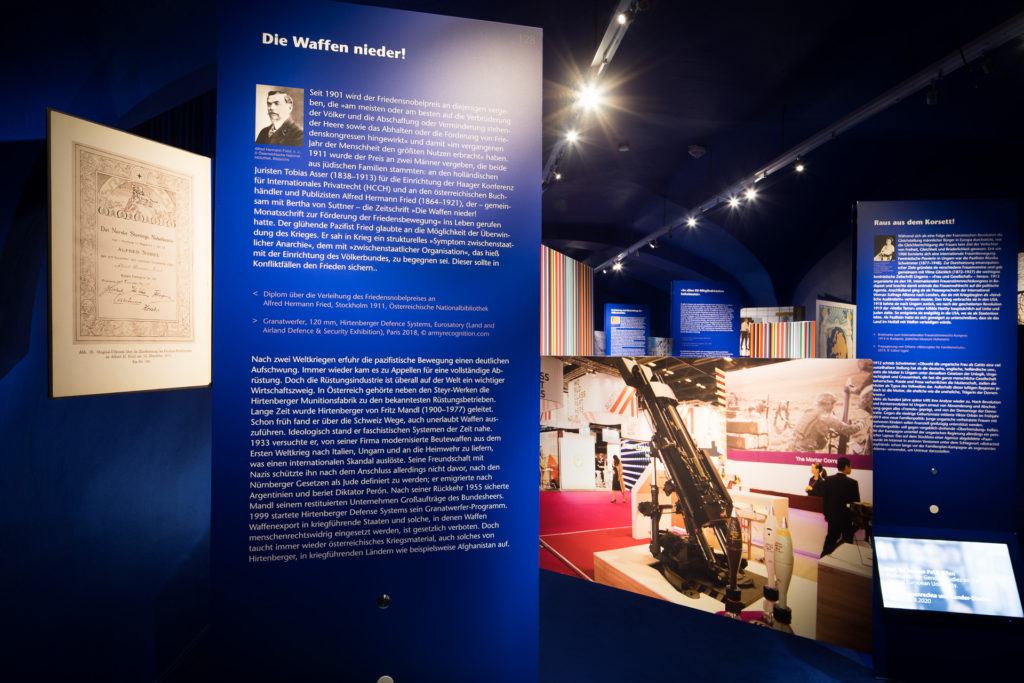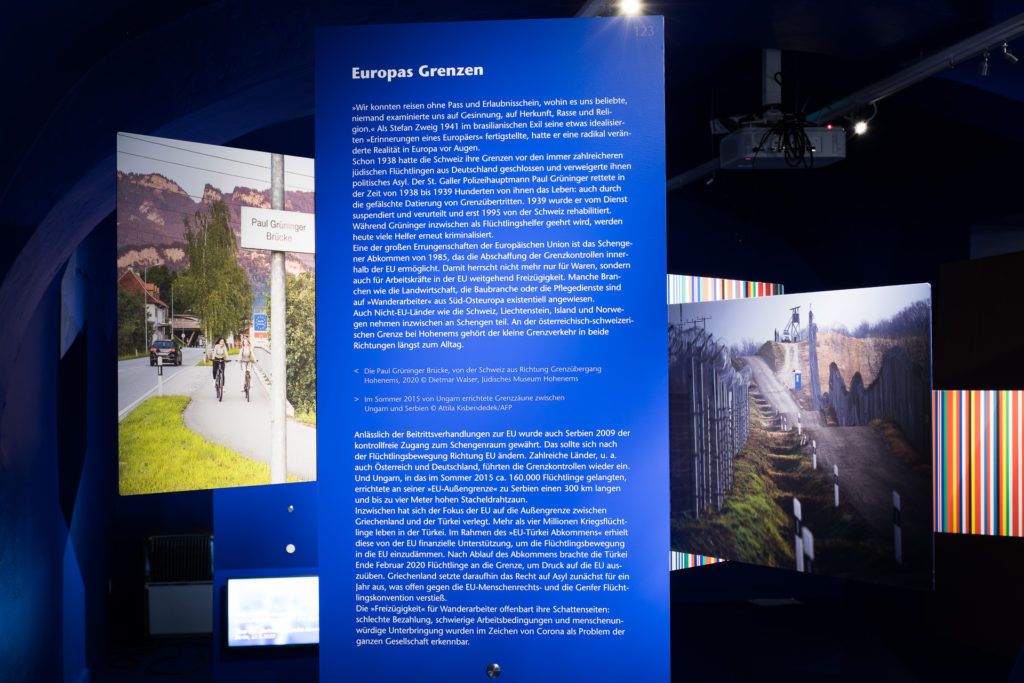
Installation Lay Down Your Arms! Photo: Dietmar Walser
Since 1901, the Nobel Peace Prize is awarded to individuals who have “done the most or best to advance fellowship among nations, the abolition or reduction of standing armies, and the establishment and promotion of peace congresses” and thus, “during the preceding year, have conferred the greatest benefit to humankind.” In 1911, the prize was awarded to two men who came from Jewish families: to the Dutch lawyer Tobias Asser (1838–1913) for the establishment of the Hague Conference on Private International Law (HCCH) and the Austrian bookseller and publisher Alfred Hermann Fried (1864–1921) who had founded—together with Bertha von Suttner—the periodical “Die Waffen nieder! Monatsschrift zur Förderung der Friedensbewegung” (Lay Down Your Arms! Monthly for the promotion of the peace movement). The ardent pacifist Fried believed in the possibility of overcoming war. He viewed war as a structural “symptom of international anarchy” that must be met with “international organization,” that is, with the establishment of the League of Nations. The latter was intended to safeguard peace in cases of conflict.
^ Alfred Hermann Fried, n. d., © Austrian National Library-Picture Archive
< Nobel Peace Prize diploma for Alfred Hermann Fried, Stockholm 1911, © ÖNB
Mortar, 120 mm, Hirtenberger Defence Systems, Eurosatory (Land and Airland Defence & Security Exhibition), Paris 2018, © armyrecognition.com
After two world wars, the pacifist movement gained broad momentum. Time and again, appeals were made for complete disarmament. However, the arms industry is an important economic sector all over the world. The Hirtenberger munitions factory was, besides the Steyr-Werke, among Austria’s best-known arms factories. For an extended period, Hirtenberger was managed by Fritz Mandl (1900–1977). Already early on, he found also unauthorized ways to export weapons via Switzerland. Ideologically, he was close to fascist systems of the time. In 1933, he made an attempt at supplying weapons, captured in World War I and modernized by his company, to Italy, Hungary, and to the Heimwehr, which elicited an international scandal. Yet, following the Anschluss, his friendship with Nazis could not protect him from being defined as Jewish according to the Nuremberg Laws; he immigrated to Argentina and became an adviser to the dictator Perón. Following his return in 1955, Mandl managed to secure for his restituted company major contracts with the Austrian Armed Forces. In 1999, Hirtenberger Defense Systems started its mortar program. Arms exports to warring states and to those that use weapons in ways that violate human rights are legally banned. Nevertheless, Austrian munition, also from Hirtenberger, keeps surfacing in warring countries such as, for instance, Afghanistan.
Michael Miller (Vienna) about the Pacifism of the Paneuropean-Union:








